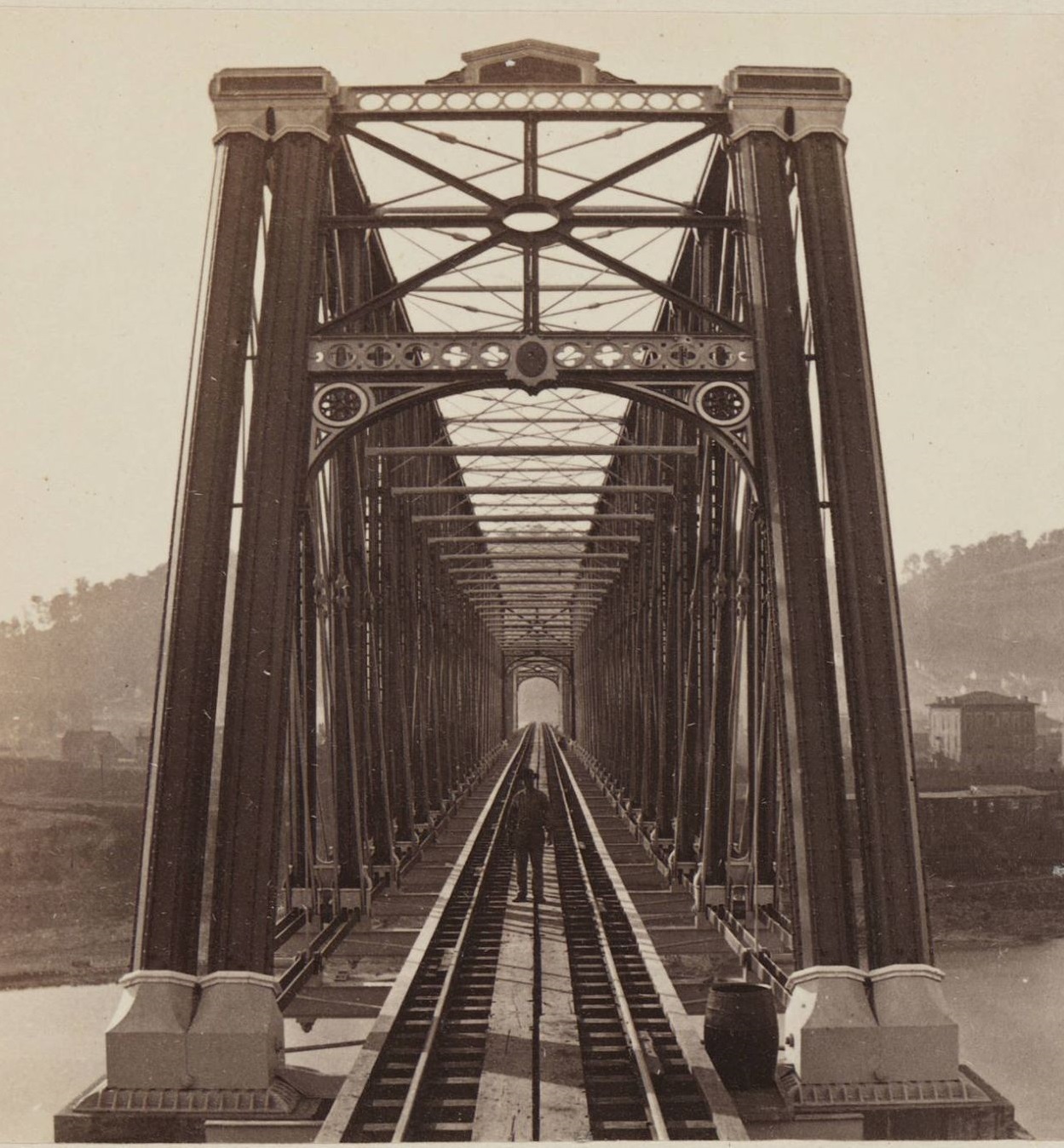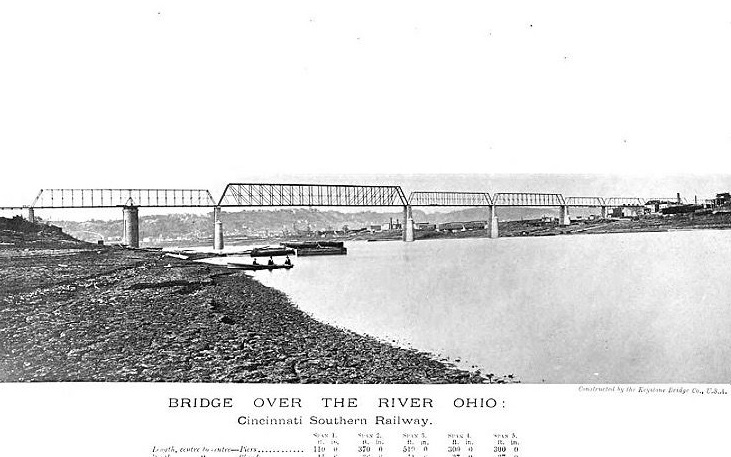Keystone Bridge Company traces its history back to four people, who all met while working with the Pennsylvania Railroad.
J.L. Piper originally worked with Aaron Gilbert Shiffler on a contractors gang for Stone, Quigley & Company as they served the Pennsylvania Railroad. After leaving that firm, Piper worked at the Altoona shops of the Pennsylvania Railroad, specifically working on turntables with Jacob Hays Linville. Shiffler and Piper began working together as the Piper & Shiffler Bridge Company in 1862, although the company may have been working with Linville to patent various designs for long span iron railroad bridges prior to 1862.
Andrew Carnegie began his career working for the Pennsylvania Railroad in 1853, when he was 18 years old. He was promoted to superintendent of the western division in 1859, where he used numerous bridges built and designed by Piper, Shiffler and Linville. During the Civil War, Carnegie was assigned to be superintendent of Military Railways. During the war, Carnegie saw how important the railroad and the industries they served were to American success, and took great interest in opening an ironworks.
Because of the success enjoyed by Piper, Linville and Shiffler; these three joined Andrew Carnegie to form the Keystone Bridge Company, which took over the shops of Piper & Shiffler Bridge Company. The excellent connections to eastern railroads and the quality of the work completed led to quick success for the new company. Carnegie left his railroad job in 1867, focusing on developing improved iron structures.

B&O Bridge over Ohio River at Bellaire, Ohio; built in 1869.
Early success was compounded by the massive contracts given to the company in the first years of business, which included prominent crossings of the Ohio River, as well as a crossing of the Mississippi River at St. Louis. Adding to this success, Carnegie developed the Bessemer Process, a way to create a stronger form of metal known as steel. The first Bessemer plant began operations in August 1875.
Carnegie initially took great interest in Keystone, considering it to be his pet project. All other mills were linked to Keystone, providing vertical integration and an ability to create finished products from raw materials, without needing a middle man.
Linville also developed a Keystone Column, a specialized type of hollow truss member which utilizes gaps and the lack of a curved design. Similar to Phoenix Columns, these inventive structures were quickly removed from favor.
Shiffler left to form his own business, the Shiffler Bridge Company at an unknown date in the 1870s. Carnegie quickly launched into an empire of forging and manufacturing steel, leaving Keystone as one small piece of his legacy.
Linville resigned his railroad and Keystone positions and moved to Philadelphia, where he continued to design bridges until his death in 1906. Little is currently known about what happened to Piper.

Cincinnati Southern Bridge over Ohio River; built 1869-1877 and designed by Jacob H. Linville
In 1893, the company was reorganized as the Keystone Bridge Works, a subsidiary of Carnegie Steel. During the final years, the company was hemorrhaging money, and was one of the least profitable branches of Carnegie Steel.
At the age of 65, Carnegie was considering retirement from his business ventures. John Pierpont Morgan, who was also a railroad man, merged 28 of the largest steel and bridge manufacturers to form American Bridge Company, which began operations in April 1900. In 1902, American Bridge became a subsidiary of U.S. Steel.
The shops of Keystone were closed in 1904. Today, many railroad bridges constructed by Keystone continue to exist throughout the United States.
A sample of Keystone Bridge Company plaques can be seen below. A number of different plaque styles were used throughout the history of the company.
Plaque on a through girder bridge at Cavalier, North Dakota
Plaque on a swing bridge at Lemont, Illinois. The Keystone name on this plaque was broken off
Selected Works
Bergfeld Pond Bridge (Dubuque, Iowa)
Eads Bridge (St. Louis, Missouri)
Heritage Trail Truss Bridge (Dubuque, Iowa)
Lemont Rail Bridge (Lemont, Illinois)
